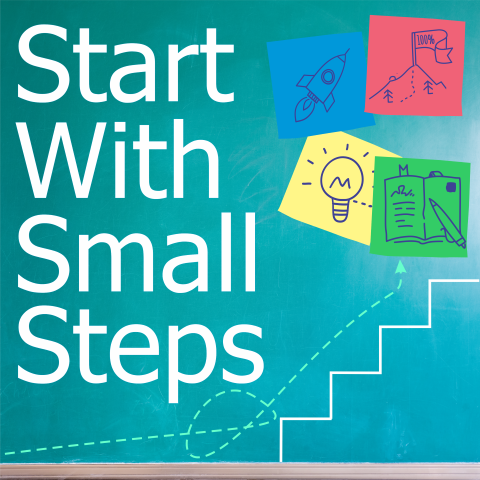Life is full of contradictions, and people are no exception. We often see strengths and weaknesses as separate things, but what if they were actually two sides of the same coin? This realization—that every positive trait has a shadow side and every weakness has a hidden strength—can be a game-changer. It helps us navigate relationships, understand ourselves better, and work towards a more balanced life.
In this post, we’ll explore this idea through personal stories, real-life examples, and practical strategies for self-improvement. Whether in leadership, relationships, or personal growth, understanding how strengths and weaknesses intertwine can help us make better decisions and foster deeper connections.
People Are Complex: Two Sides of the Same Coin
Each of us carries a mix of strengths and weaknesses, often deeply connected. A person who is highly logical may struggle with emotional sensitivity. Someone with an empathetic heart might carry the weight of others’ emotions to an unhealthy degree. Recognizing this duality allows us to extend grace to ourselves and those around us.
Examples of Strengths & Their Shadow Sides
- Confidence vs. Arrogance – A strong, self-assured leader may come across as dismissive or unwilling to consider other perspectives.
- Empathy vs. Emotional Overload – A deeply compassionate person can struggle with setting boundaries and absorbing others’ pain.
- Perfectionism vs. Paralysis – Attention to detail is valuable, but the fear of imperfection can lead to inaction.
- Adaptability vs. Lack of Direction – Being flexible is great, but it can lead to an inability to commit or focus.
- Ambition vs. Workaholism – Hard work can lead to success, but it can also result in burnout and neglecting personal relationships.
Once we see that our biggest strengths can also become challenges, we can begin to manage them better.
The Hidden Costs of Overusing Strengths
Sometimes, we lean too hard on one trait at the expense of balance. Like an injured ankle that forces you to overcompensate with the other leg—only to injure that one too—our strengths can backfire when they dominate too much.
For instance, if you’re a natural peacemaker, you might bend over backward to smooth over conflicts, even when confrontation is necessary. If you’re analytical, you may rely so much on logic that you struggle to connect emotionally. Recognizing these tendencies allows us to adjust and grow.
Real-Life Example: Leadership & Decision-Making
A former manager in a tech company shared her experience of being a great coach and team builder, but she struggled with being assertive in contract negotiations. Her leadership style was effective in some ways, but when it came time to make tough calls, she had to step outside her comfort zone. By reframing negotiations as a way to protect her team rather than just a business transaction, she found a way to bridge the gap between her strengths and weaknesses.
This kind of self-awareness can help us navigate our careers, relationships, and personal growth more effectively.
How to Balance Strengths & Weaknesses
1. Self-Awareness Is Key
Understanding your natural tendencies allows you to adjust when needed. Are you overly detail-oriented to the point of micromanaging? Do you avoid risks so much that you miss out on opportunities? Recognizing patterns in your behavior helps you find balance.
2. Seek Feedback & Perspective
Sometimes, we can’t see our own blind spots. Trusted friends, colleagues, or mentors can provide insights into how we come across and where we might need to adjust.
3. Journal & Reflect on Patterns
Keeping a journal can help identify recurring struggles. Are you often drained from overextending yourself emotionally? Do you procrastinate out of fear of imperfection? Seeing these patterns on paper makes them easier to address.
4. Find Complementary Partnerships
Surround yourself with people whose strengths counterbalance your weaknesses. A detail-oriented person might work well with a big-picture thinker. A cautious planner can benefit from a spontaneous, risk-taking friend.
5. Set Intentional Boundaries
If you tend to overuse a particular strength, put limits in place. A workaholic might schedule daily non-negotiable family time. A perfectionist might set a deadline and commit to finishing a task even if it’s not flawless.
6. Train the Opposite Skill
If you’re highly logical, practice emotional awareness. If you’re risk-averse, take small calculated risks. Growth happens when we stretch beyond our comfort zones.
7. Remember: Life Isn’t Black & White
Instead of seeing yourself as “good” or “bad” at something, think of personality traits on a sliding scale. You don’t have to go from being overly cautious to reckless overnight—just move the dial slightly towards balance.
Understanding Others with Grace
Recognizing that everyone has strengths and weaknesses allows us to be more forgiving and understanding. Instead of getting frustrated with someone’s rigidity, we can see that they likely have a deep need for structure. Instead of dismissing someone as “too emotional,” we can appreciate their empathy.
By viewing others as whole individuals rather than just their best or worst traits, we foster better relationships. Sometimes, all it takes is a shift in perspective to turn frustration into understanding.
Final Thoughts: Embracing the Whole Coin
We are all paradoxes—strong yet flawed, capable yet limited. The key is to understand ourselves and others with honesty, balance, and grace. Instead of trying to “fix” our weaknesses or ignore them, we can work to create a more balanced approach to life.
Next time you encounter a challenging trait in yourself or someone else, ask:
- What’s the strength behind this weakness?
- What’s the downside of this strength?
- How can I adjust my approach to create better balance?
When we accept that everyone—ourselves included—is a coin with two sides, we can move through life with greater compassion, wisdom, and self-awareness.
Your Challenge: Self-Reflection & Action
Take a moment to reflect:
- What’s one strength you rely on too much?
- What’s one weakness that might have an upside?
- How can you work towards better balance this week?
Leave a comment below or share your thoughts—let’s grow together! 🚀
If you enjoyed this post, don’t forget to subscribe, share with a friend, or reach out with your thoughts at jillatstartwithsmallsteps.com. See you next week for another step towards personal growth! 🎙️

